2017-03-23 - Nº 99
Editorial
Esta é a Newsletter Nº 99 que se apresenta com o mesmo formato que as anteriores. Se gostar da Newsletter partilhe-a!
Todas as Newsletters encontram-se indexadas no link.
Esta Newsletter tem os seguintes tópicos:
Faz hoje anos que nascia em 1749 Pierre-Simon Laplace. A este estudioso francês são atribuídos diversos avanços nas áreas da matemática, estatística, física e astronomia. O seu trabalho permitiu que o estudo geométrico da mecânica clássica passasse a ser baseado no cálculo, criando as bases para uma gama mais ampla de problemas. Na estatística, a interpretação bayesiana da probabilidade foi desenvolvida principalmente por Laplace. Laplace formulou a equação de Laplace e foi pioneiro na transformada de Laplace que aparece associada a muitos ramos da física matemática, um campo onde ele assumiu um papel de liderança na formação. O operador diferencial laplaciano, amplamente utilizado em matemática, também é nomeado após ele. Ele reafirmou e desenvolveu a hipótese nebular da origem do Sistema Solar e foi um dos primeiros cientistas a postular a existência de buracos negros e a noção de colapso gravitacional. Faz hoje anos também que nascia Edward Norton Lorenz. Este matemático norte-americano nascido em 1917 ficou conhecido pela teoria dos caos que enunciou relacionada com fenómenos atmosféricos. Nesta inclui-se o efeito borboleta onde pequenas causas podem ter grandes efeitos. Inicialmente, foi usado com a previsão do tempo, mas mais tarde o termo se tornou uma metáfora usada dentro e fora da ciência. É a este matemático também atribuído o atrator de Lorenz. Trata-se de um sistema de equações diferenciais ordinárias estudado pela primeira vez por este matemático. É notável por ter soluções caóticas para certos valores de parâmetros e condições iniciais. Em particular, o atrator Lorenz é um conjunto de soluções caóticas do sistema Lorenz que, quando desenhadas, se assemelham a uma borboleta ou figura oito.
Esta semana ficámos a saber que a NASA está a criar uma Internet espacial. Trata-se de um sistema de comunicações usando laser e que tem o potencial para revolucionar as comunicações espaciais. Ficámos igualmente a sabe que uma equipa de cientistas conseguiu bater o recorde de eficiência de captação de energia solar. A Kaneka Corporation desenvolveu um painel solar de silício cristalino de alta eficiência de conversão. Conseguiram estabelecer o recorde de 26.33% num painel solar de silício cristalino com um tamanho prático (180 cm2). Por fim, o telescopio Hubble detecta buraco negro supermassivo a grande distância do centro galáctico. O buraco negro foi ‘empurrado’ para fora do centro da galáxia 3C186, localizada a uma distância aproximada de oito mil milhões de anos-luz da Terra, provavelmente devido à energia exercida pela radiação gravitacional. As imagens da galáxia captadas pelo telescópio espacial Hubble, operado pela ESA, revelam um quasar brilhante, a assinatura da energia de um buraco negro activo, situado longe do núcleo da galáxia.
Na Newsletter desta semana apresentamos diversos projetos de maker assim como alguns modelos 3D que poderão ser úteis. É apresentado também cinco livros, todos eles da Usborne sobre diversos temas relacionados com programação.
 João Alves ([email protected])
João Alves ([email protected])
O conteúdo da Newsletter encontra-se sob a licença  Creative Commons Attribution-NonCommercial-ShareAlike 4.0 International License.
Creative Commons Attribution-NonCommercial-ShareAlike 4.0 International License.
Novidades da Semana ^

NASA Taking First Steps Toward High-speed Space ‘Internet’
"NASA is developing a trailblazing, long-term technology demonstration of what could become the high-speed internet of the sky. The Laser Communications Relay Demonstration (LCRD) will help NASA understand the best ways to operate laser communications systems. They could enable much higher data rates for connections between spacecraft and Earth, such as scientific data downlink and astronaut communications. “LCRD is the next step in implementing NASA’s vision of using optical communications for both near-Earth and deep space missions,” said Steve Jurczyk, associate administrator of NASA’s Space Technology Mission Directorate, which leads the LCRD project. “This technology has the potential to revolutionize space communications, and we are excited to partner with the Human Exploration and Operations Mission Directorate’s Space Communications and Navigation program office, MIT Lincoln Labs and the U.S. Air Force on this effort.”" [...]
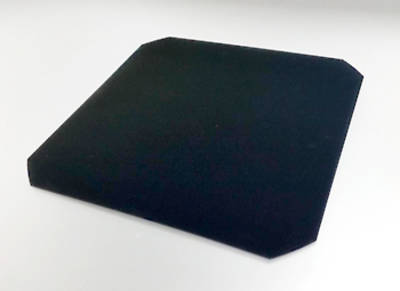
World’s Highest Conversion Efficiency of 26.33% Achieved in a Crystalline Silicon Solar Cell ― A World First in a Practical Cell Size
"The levelized cost of electricity (LCOE) using photovoltaic technologies is still high compared with other power generation methods, and cost reduction is a continuous challenge. A number of companies and research organizations around the world have been carrying out technological development to improve the conversion efficiency of solar cells, which will contribute to a considerable reduction in LCOE. Kaneka Corporation developed a high conversion-efficiency crystalline silicon solar cell (heterojunction back-contact type) in NEDO’s Development of High-Performance and Reliable PV Modules to Reduce LCOE project, and has achieved the world’s highest conversion efficiency of 26.33% in a crystalline silicon solar cell having a practical size (180 cm2). This achievement breaks the world record of 25.6% by ~0.7%, exceeding 26% for the first time in the world." [...]

Hubble detects supermassive black hole kicked out of galactic core
"Though several other suspected runaway black holes have been seen elsewhere, none has so far been confirmed. Now astronomers using the NASA/ESA Hubble Space Telescope have detected a supermassive black hole, with a mass of one billion times the Sun’s, being kicked out of its parent galaxy. “We estimate that it took the equivalent energy of 100 million supernovae exploding simultaneously to jettison the black hole,” describes Stefano Bianchi, co-author of the study, from the Roma Tre University, Italy. The images taken by Hubble provided the first clue that the galaxy, named 3C186, was unusual. The images of the galaxy, located 8 billion light-years away, revealed a bright quasar, the energetic signature of an active black hole, located far from the galactic core. “Black holes reside in the centres of galaxies, so it’s unusual to see a quasar not in the centre,” recalls team leader Marco Chiaberge, ESA-AURA researcher at the Space Telescope Science Institute, USA." [...]
Outras Notícias
- TSMC Tips 7+, 12, 22nm Nodes
- ARM DynamIQ: Expanding the possibilities for artificial intelligence
- Lighting the path to production for connected buildings with mbed OS 5.4
Ciência e Tecnologia ^

As Moore’s law nears its physical limits, a new generation of brain-like computers comes of age in a Stanford lab
"For five decades, Moore’s law held up pretty well: Roughly every two years, the number of transistors one could fit on a chip doubled, all while costs steadily declined. Today, however, transistors and other electronic components are so small they’re beginning to bump up against fundamental physical limits on their size. Moore’s law has reached its end, and it’s going to take something different to meet the need for computing that is ever faster, cheaper and more efficient. As it happens, Kwabena Boahen, a professor of bioengineering and of electrical engineering, has a pretty good idea what that something more is: brain-like, or neuromorphic, computers that are vastly more efficient than the conventional digital computers we’ve grown accustomed to. This is not a vision of the future, Boahen said. As he lays out in the latest issue of Computing in Science and Engineering, the future is now." [...]
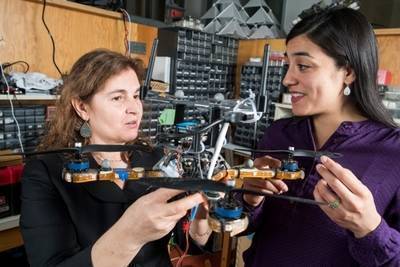
Security for multirobot systems
"Distributed planning, communication, and control algorithms for autonomous robots make up a major area of research in computer science. But in the literature on multirobot systems, security has gotten relatively short shrift. In the latest issue of the journal Autonomous Robots, researchers from MIT’s Computer Science and Artificial Intelligence Laboratory and their colleagues present a new technique for preventing malicious hackers from commandeering robot teams’ communication networks. The technique could provide an added layer of security in systems that encrypt communications, or an alternative in circumstances in which encryption is impractical." [...]

Bushwhacking into Unexplored Transistor Territories
"Since the advent of microelectronics in the mid-20th century, humanity has been on a nonstop sprint to eke more speed, power efficiency, and computational power from the sextillions (1021) of ever more miniaturized transistors that have come to underlie so much of the modern technoscape. Even so, the materials scientists, electrical engineers, and other specialists who are leading this decades-long advance know that astounding technological opportunities abound within both existing and yet-to-be-imagined semiconductor structures. When it comes to transistors that generate and receive radiofrequency (RF) and millimeter-wave signals—which are central in defense-relevant domains such as communications, signals intelligence, and electronic warfare—DARPA’s new Dynamic Range-enhanced Electronics and Materials (DREaM) program is designed to provide openings to these path-breaking advances." [...]
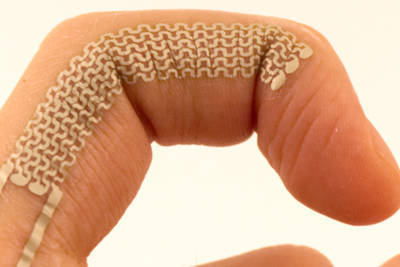
E-tattoos turn knuckles and freckles into smartphone controls
"Make the most of that beauty spot. Ultrathin temporary electronic tattoos can now turn body blemishes into touch-sensitive buttons, letting you control your smartphone with your own wrinkles, freckles and other skin features. People intuitively know the location of their own bumps and birthmarks, which makes them ideal locations for touch-sensitive buttons, says Martin Weigel at Saarland University in Saarbrücken, Germany, who has led the research. You could squeeze a freckle to answer a phone call, or slide a finger over your knuckles to change the volume of your music. Weigel and his colleagues at Saarland University and Google used conductive ink to print wires and electrodes on temporary tattoo paper. The tattoos, which they call SkinMarks, are thinner than the width of a human hair. They are transferred onto the skin using water and last a couple of days before rubbing off." [...]

Wi-fi on rays of light: 100 times faster, and never overloaded
"The system conceived in Eindhoven is simple and, in principle, cheap to set up. The wireless data comes from a few central ‘light antennas’, for instance mounted on the ceiling, which are able to very precisely direct the rays of light supplied by an optical fiber. Since there are no moving parts, it is maintenance-free and needs no power: the antennas contain a pair of gratings that radiate light rays of different wavelengths at different angles (‘passive diffraction gratings’). Changing the light wavelengths also changes the direction of the ray of light. Since a safe infrared wavelength is used that does not reach the vulnerable retina in your eye, this technique is harmless. If you walk around as a user and your smartphone or tablet moves out of the light antenna’s line of sight, then another light antenna takes over. The network tracks the precise location of every wireless device using its radio signal transmitted in the return direction. It is a simple matter to add devices: they are assigned different wavelengths by the same light antenna and so do not have to share capacity. Moreover, there is no longer any interference from a neighboring wi-fi network." [...]

Stanford scientists create three-dimensional bladder reconstruction
"The way doctors examine the bladder for tumors or stones is like exploring the contours of a cave with a flashlight. Using cameras attached to long, flexible instruments called endoscopes, they find that it’s sometimes difficult to orient the location of masses within the bladder’s blood vessel-lined walls. This could change with a new computer vision technique developed by Stanford researchers that creates three-dimensional bladder reconstructions out of the endoscope’s otherwise fleeting images. With this fusion of medicine and engineering, doctors could develop organ maps, better prepare for operations and detect early cancer recurrences." [...]
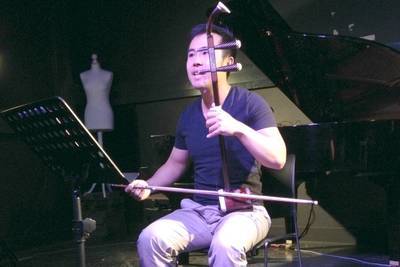
Quantum physics offers insight into music expressivity
"Vibrato is the up-down oscillation in pitch introduced during instrumental or vocal performance, intended to add expressivity and to facilitate sound projection, and commonly used in opera. A well-timed and beautifully executed vibrato can greatly enhance the sound quality of a note, and induce strong emotional responses in the listener. The new approach to vibrato analysis, published in the Journal of Mathematics and Music, describes for the first time the use of the Filter Diagonalisation Method (FDM) in music signal processing. The technique has origins in quantum physics and is employed to study molecular dynamics and nuclear magnetic resonance." [...]
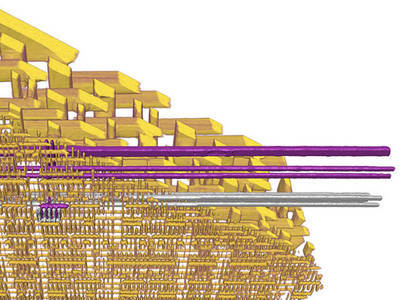
X-rays Map the 3D Interior of Integrated Circuits
"A team of researchers based in Switzerland is on the way to laying bare much of the secret technology inside commercial processors. They pointed a beam of X-rays at a piece of an Intel processor and were able to reconstruct the chip’s warren of transistors and wiring in three dimensions. In the future, the team says, this imaging technique could be extended to create high-resolution, large-scale images of the interiors of chips. The technique is a significant departure from the way the chip industry currently looks inside finished chips, in order to reverse engineer them or check that their own intellectual property hasn’t been misused. Today, reverse engineering outfits progressively remove layers of a processor and take electron microscope images of one small patch of the chip at a time." [...]

New computer software programme excels at lip reading
"A new computer software programme has the potential to lip-read more accurately than people and to help those with hearing loss, Oxford University researchers have found. Watch, Attend and Spell (WAS), is a new artificial intelligence (AI) software system that has been developed by Oxford, in collaboration with the company DeepMind. The AI system uses computer vision and machine learning methods to learn how to lip-read from a dataset made up of more than 5,000 hours of TV footage, gathered from six different programmes including Newsnight, BBC Breakfast and Question Time. The videos contained more than 118,000 sentences in total, and a vocabulary of 17,500 words. The research team compared the ability of the machine and a human expert to work out what was being said in the silent video by focusing solely on each speaker’s lip movements. They found that the software system was more accurate compared to the professional. The human lip-reader correctly read 12 per cent of words, while the WAS software recognised 50 per cent of the words in the dataset, without error. The machine’s mistakes were small, including things like missing an “s” at the end of a word, or single letter misspellings." [...]
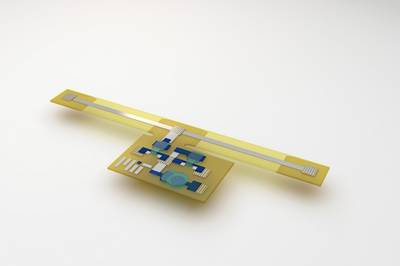
Toward printable, sensor-laden “skin” for robots
"In this age of smartphones and tablet computers, touch-sensitive surfaces are everywhere. They’re also brittle, as people with cracked phone screens everywhere can attest. Covering a robot — or an airplane or a bridge — with sensors will require a technology that is both flexible and cost-effective to manufacture in bulk. A team of researchers at MIT’s Computer Science and Artificial Intelligence Laboratory thinks that 3-D printing could be the answer. In an attempt to demonstrate the feasibility of flexible, printable electronics that combine sensors and processing circuitry and can act on their environments, the researchers have designed and built a device that responds to mechanical stresses by changing the color of a spot on its surface. The device was inspired by the golden tortoise beetle, or “goldbug,” an insect whose exterior usually appears golden but turns reddish orange if the insect is poked or prodded — that is, mechanically stressed." [...]

Scientists use new technology to assemble genome of Zika virus mosquito
"A team spanning Baylor College of Medicine, Rice University, Texas Children's Hospital and the Broad Institute of MIT and Harvard has developed a new way to sequence genomes, which can assemble the genome of an organism, entirely from scratch, dramatically cheaper and faster. While there is much excitement about the so-called "$1000 genome" in medicine, when a doctor orders the DNA sequence of a patient, the test merely compares fragments of DNA from the patient to a reference genome. The task of generating a reference genome from scratch is an entirely different matter; for instance, the original human genome project took 10 years and cost $4 billion. The ability to quickly and easily generate a reference genome from scratch would open the door to creating reference genomes for everything from patients to tumors to all species on earth. Today in Science, the multi-institutional team reports a method - called 3D genome assembly - that can create a human reference genome, entirely from scratch, for less than $10,000. To illustrate the power of 3D genome assembly, the researchers have assembled the 1.2 billion letter genome of the Aedes aegypti mosquito, which carries the Zika virus, producing the first end-to-end assembly of each of its three chromosomes. The new genome will enable scientists to better combat the Zika outbreak by identifying vulnerabilities in the mosquito that the virus uses to spread." [...]
Modelos 3D ^
Com a disponibilidade de ferramentas que permitem dar azo a nossa imaginação na criação de peças 3D e espaços como o thingiverse para as publicar, esta rubrica apresenta alguns modelos selecionados que poderão ser úteis.
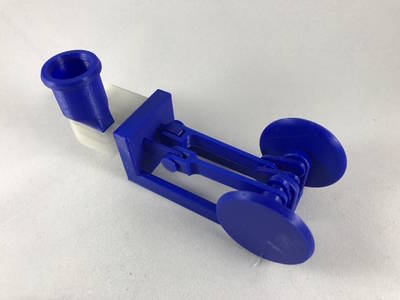
Single Cylinder Air Engine Smaller Edition
"Single Cylinder Air Engine Smaller Edition is the smaller sibling of my previous Single Cylinder Air Engine here: https://www.instructables.com/id/Single-Cylinder-.... While Single Cylinder Air Engine Smaller Edition was designed as a test platform for another design, the test video I posted on Youtube caused a few people to message me to ask for the model, so here it is. I've included a video that shows this engine in a new design I have yet to complete. Having a smaller total displacement than my previous design, this engine runs longer on balloon power but as a trade off delivers less torque. Also, being smaller and having a crank shaft that is assembled in place requires even more fine scraping, sanding and/or filing and meticulous assembly steps to make this engine work at its peak efficiency, so be patient during the printing, preparing and assembly process. I probably forgot a file or two or something, so if you have any questions, please feel free to ask. Designed using Autodesk Fusion 360, sliced using Cura 2.3.1, and printed in PLA on an Ultimaker 3 Extended." [...]

OpenSCAD Turbine Propeller Generator
"Something that can automatically generate a turbine or propeller? This OpenSCAD script does just that! Generate very quickly a parametrised turbine or propeller. Arguably the best one on thingiverse? t is quite complete, here I list its features: Clockwise/ Counter Clockwise rotation; Leading edge of blade can be curve (an Arc) or straight. A module is created to generate arcs (OpenSCAD can't draw Arc primitives); Trailing edge blade can curve inwards (I call it 'convex') or outward ('concave') and this can be defined with an exponentiation function (you decide the base or power); See: https://en.wikipedia.org/wiki/Exponentiation ; There's an offset parameter, allowing you to prescribe, when curvature begins (applied)...; Of course, number of blades, length, height, thickness, stem radius, shaft radius, etc..." [...]
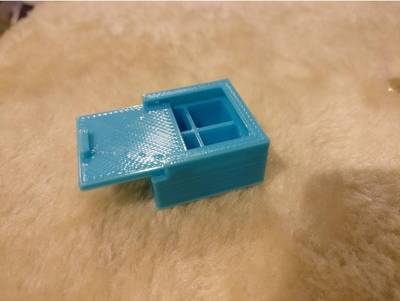
Customizable Compartmentalized Container
"This customizable compartmentalized container was quite fun to make! The purpose was to make a container for essential oils so the box sizing centers around the compartment size and quantity." [...]
Documentação ^
A documentação é parte essencial do processo de aprendizagem e a Internet além de artigos interessantes de explorar também tem alguma documentação em formato PDF interessante de ler. Todos os links aqui apresentados são para conteúdo disponibilizado livremente pelo editor do livro.
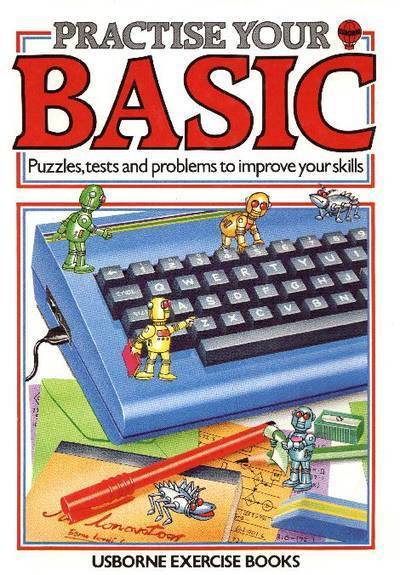
Practise your BASIC
"This book contains lots of exercises, puzzles and problems to solve by writing programs, to help you practise your BASIC. There are programs with missing lines and variables to fill in, listings full of bugs to spot and correct, and ideas for programs to write yourself. The book covers all the most important BASIC commands, starting with simple PRINT statements and ending with guidelines for writing a long program for a treasure hunt game." [...]

Better BASIC
"This book is a step-by-step guide to understanding programs and improving your BASIC. Not everyone wants to write their own programs, but once you understand how BASIC works, it is easy to adapt or debug other people's programs and from there it is a short step to writing your own." [...]
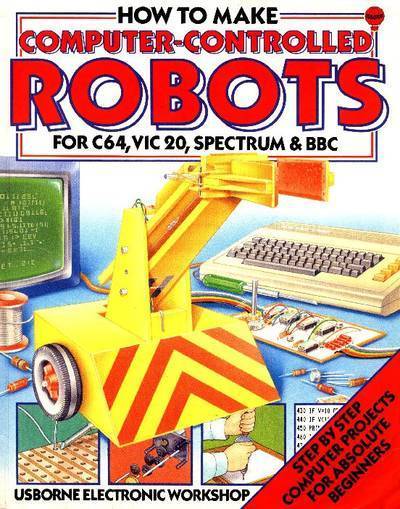
How To Make Computer-Controlled Robots for C64, VIC20, Spectrum & BBS
"In this book you can find out about computer-controlled robots and how to make them. There are step-by-step instructions showing how to build a robot which moves around on wheels and picks things up with its gripper." [...]

Experiments With Your Computer
"This book contains lots of fun programs which enable you to use your computer to do experiments and analyze information. The programs are simple examples of how scientists, economists and other researchers use computers. They are designed for home computers and will run on the Commodore 64, VIC 20, TRS-80 Colour Computer (32K), Apple II, BBC (B), Electron and Spectrum." [...]
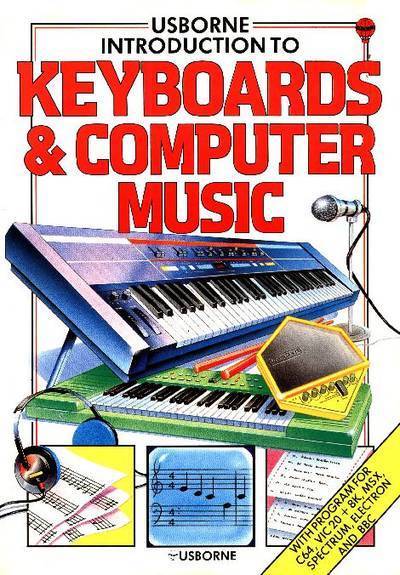
Introduction to Keyboards & Computer Music
"This book is about electronic music and the instruments that make it. These range from cheap portable keyboards, which you can use at home, to large expensive synthesizers which you see being played by pop groups and bands. You will see other electronic instruments as well, such as drums and guitars. You can find out how all these instruments are played and how they make the music you hear on records. The book also includes the most Sophisticated electronic music instruments in the world. These can play music with any sound you can think of, and also make sounds which no one ever heard before." [...]
Projetos Maker ^
Diversos Projetos interessantes.

PiGlass
"A device that can measure environmental conditions and relay to the user; in glasses form." [...]
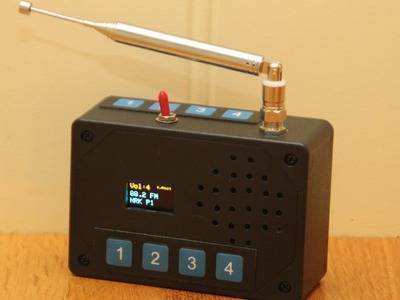
FM radio
"Build a great sounding FM radio with a cool display using an Arduino Nano and the Sparkfun Si4703 FM tuner breakout. As a kid, I used to build AM radios but never quite managed to build FM radios. They were just too complicated. Nowadays, you can get a complete FM radio tuner on a chip but these chips are surface-mount components and difficult for a hobbyist to work with. Fortunately, Sparkfun makes a breakout for the Silicon Laboratories Si4703 FM radio tuner chip (datasheet), which breaks out all pins. I will show you how you can build a complete FM radio around this breakout and use an Arduino to control the tuner functions over the built-in two-wire control interface. Sparkfun provides a complete library making this easy to program. At the same time, I added a cool little OLED display to the project with very high contrast and very low power consumption. Last but not least, I will show you how you can build a great-sounding mono audio amplifier from a minimum of parts. The finished radio runs on three AA-batteries for many, many hours." [...]
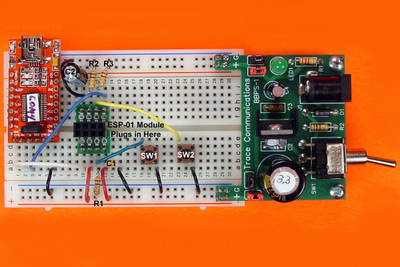
How to Flash ESP-01 Firmware to the Improved SDK v2.0.0
"The success of the ESP8266 from Espressif Systems is undeniable. It is a powerful microcontroller with built-in Wi-Fi capabilities and is readily adaptable to a multitude of uses in the rapidly growing IoT (Internet of Things). One of the few difficulties to using the IC has been updating the firmware in the thousands and thousands of development modules that have permeated the market. Judging by the large number of comments posted, this article on All About Circuits has been a help to many. However, the passage of time has revealed some corrections and improvements needed in the information that was provided in October of 2015, and presenting that information is the goal of this article." [...]
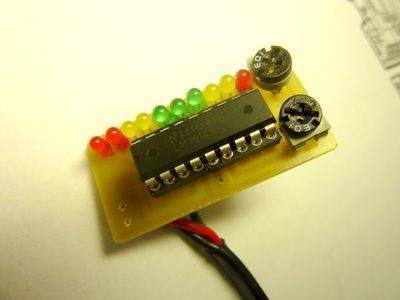
O2 Sensor Tester ( Lambda Sensor)
"O2 sensors do wear out and eventually need to be replaced. The performance of the O2 sensor tends to diminish with age as contaminants accumulate on the sensor tip and gradually reduce it's voltage. This is caused by substances such as lead, silicone, sulfur, oil ash and even some fuel additives. The sensor may also be damaged by water, road salt, oil and dirt. The best way to validate a O2 sensor is functioning normally is to check responsiveness to changes in the air/fuel mixture with an oscilloscope. if an oscilloscope is not available, the O2 sensor's output voltage can be read with a scan tool or digital voltmeter, but the transitions are hard to see because the numbers fluctuate quite a bit. And it is another method using LM3914N dot/bar display driver." [...]

Microcontroller Battery Monitor Circuit Needs Only One Pin
"This circuit solved a problem encountered in developing a portable device with an ARM Cortex-M0 processor. The power supply consisted of two AA batteries (2 × 1.5 V), and I needed to signal the user about the battery's state. The Cortex-M0 operates from 3.3 V down to 2.0 V, and an AA battery is considered discharged when its voltage drops to 1.1 V, so the available supply is 1.1 V × 2 = 2.2 V. This was a very low-power application that could work down to 2.2 V, so it was not necessary to warn the user to change the batteries until that voltage level was reached." [...]
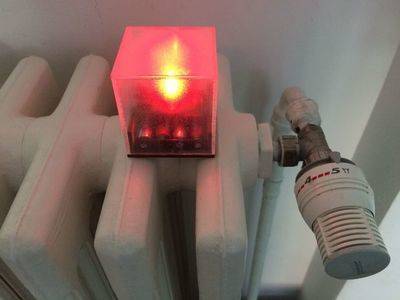
Temperature Changing Color Cube
"Recently I made a camera stand so I can film my hands while soldering and assembling my project (Instructable of this is coming soon). This is a kick-off project to test the equipment! (And I made it a gift for Henk Rijckaert) It's a 6cm x 6cm x 6cm cube that changes colors based on the temperature!" [...]
![]()
Wifi Controlled Car / IOT Bot
"In this Instructable, you will learn to make a WiFi Controlled Car and also to make an App for it(without coding). You will need no prior knowledge on App making . The knowledge gained from this project can also be used in different IOT projects,Automation and projects where one needs to control devices via WiFI." [...]

The Ultimate Universal IoT Solution for IR Remotes
"Last year, I published an Instructable which was aimed to replace all IR Remotes with a new device - only the device could hold 4 codes and only accessible through iOS devices. In an effort to help solve this problem, I wanted to create a device which can control multiple devices, such as the ones in entertainment systems, and can be easily controlled through phones and laptops. The main limitations with the last version were that it could only hold a limited number of IR codes (4) at a time, was only controllable through iPhones, and had a limited range it could be controlled from." [...]

Make an LED Arrow Sign with RasPiO InsPiRing
"One of the interesting usage possibilities for the RasPiO InsPiRing system is illuminated signage. What could be better than flashy, blinky, multi-coloured signage? Well, not much really? So I decided to make an arrow out of two straight 8s and a triangle. I used white depron foam as a base, ordinary headers and jumper wires to connect all the shapes to each other and to the controller. Then a needle and thread and some hot glue to fasten the shapes to the depron. I then darkened the foam with a marker pen. This is what it looks like." [...]
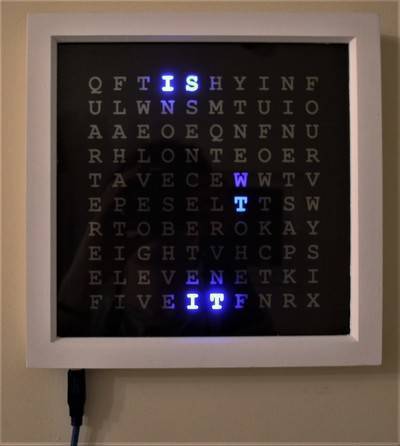
Wordsearch clock
"Every maker makes a word clock at some point, and I guess this is my turn. I didn't want to make the same thing as everyone else though, so I put my own spin on it. Why have a static clock that displays fixed, always readable words, when you could make something more visually interesting? I wanted to make a clock that looked like a regular wordsearch puzzle, which appears to "solve itself" in order to display the time. Originally I had the idea that the words could share as many letters as possible, in order to minimise the number of letters on the clock face and hence the number of LEDs required. As the design progressed, I came to the conclusion that sharing letters between words made the clock less readable, and so I settled on a 10 x 10 grid." [...]

Inside the vintage 74181 ALU chip: how it works and why it's so strange
"The 74181 ALU (arithmetic/logic unit) chip powered many of the minicomputers of the 1970s: it provided fast 4-bit arithmetic and logic functions, and could be combined to handle larger words, making it a key part of many CPUs. But if you look at the chip more closely, there are a few mysteries. It implements addition, subtraction, and the Boolean functions you'd expect, but why does it provide several bizarre functions such as "A plus (A and not B)"? And if you look at the circuit diagram (below), why does it look like a random pile of gates rather than being built from standard full adder circuits. In this article, I explain that the 74181's set of functions isn't arbitrary but has a logical explanation. And I show how the 74181 implements carry lookahead for high speed, resulting in its complex gate structure." [...]

Connect Four - Assembly and VHDL by Chloe Eusebio and Kent Zhang
"In our experiment, we remake the game Connect Four using a CPU made in our CPE 233 class. Throughout the first seven weeks of the quarter, we strive to create this CPU written in VHDL using a program called Vivado. The specific CPU we created is shown in the image attached. We then created the actual Connect Four game and all its features using our RAT assembler. Our RAT assembler program is specific to our class/school and simply uses instructions, registers, and memory to create programs instructions for our CPU. The rules of Connect Four are simple, place chips into a 7x6 board and try your best to get four or more pieces in a row to win." [...]
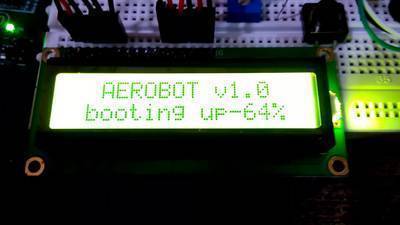
AEROBOT Air Quality Sensor V1.0
"This instructable is about making an inexpensive and a highly accurate air quality sensor named AEROBOT. This project shows temperature,relative humidity, PM 2.5 dust density and alerts about the air quality of the surroundings. It uses a DHT11 sensor for temperature and relative humidity, a sharp optical dust sensor for dust density and an ultrasonic sensor to inform users about inaccurate readings due to blocking of the sensor. This project can be made easily and doesn't need any expertise in arduino. The dust sensor is very quick and can read even the slightest contamination in the surroundings. its maximum range is unknown but it usually is ineffective after the dust density goes over 600. But this is far more than the average contamination of 150. The measuring range of temperature is from -10 to 80 degree celsius and that of relative humidity is from 10% to 90%. Therefore this project is highly effective and efficient as a air quality sensor for homes and offices not in the radius of high pollution." [...]
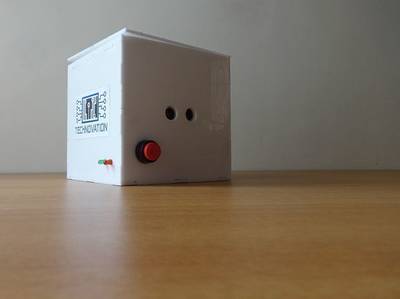
CUBEX - an Arduino Sensor Safe
"Ever wondered if you could control things with the power of your gestures? Ever wondered if with the help of sensors you could make things look as though it works by magic? Well meet CUBEX, an Arduino sensor safe that permits you to do what you always wanted to do! To magically open up your very own safe! This safe will open up without even you ever touching it! At home I wanted a space where i could keep my secret ''treasures'' well away from the reach of my siblings, parents or even friends. This got me thinking to a rather different design of a safe! With the invention of CUBEX, you don't need keys neither do you need a number lock, you will unlock it only with the power of your gestures. To play on with the magical idea we added in motors so that the box actually opens up completely by itself, somewhat like a scene from a Sci-fi movie!" [...]
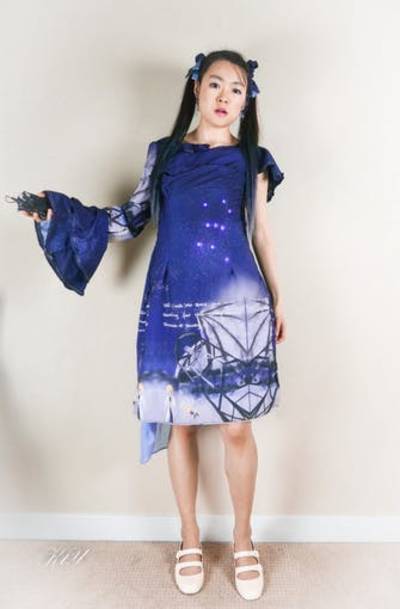
Arduino 101 - Intel Curie Pattern Matching Dress
"I'm an engineer and artist who enjoys projects that combine science and arts. I've been making dress designs with microcontrollers embedded in so that certain functionality of electronic components can be used to enhance the design theme. For this project, I want to use the pattern matching engine and the accelerometer inside Intel Curie on Arduino 101. The dress uses a page of my graphic novel as the fabric. A scientist and her robot are looking into the telescope. As the wearer draws a pattern in the air, a set of LEDs arranged in the shape of constellations will shine in the night sky on the fabric." [...]
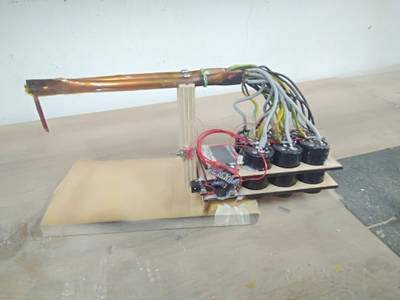
Arduino Spot Welder
"Nowadays it is very common to use batteries on makers projects. The propose of the project is to be able to solder easily on lithium batteries without using battery case holders. This cool solution allows to build a small and cheap spot welding machine. Spot welders based on capacitors use large capacitors to store electrical energy and release it quickly. Capacitors can deliver large current peaks extremely fast. The capacitors discharge energy is dissipated due to the metal resistance in the form of heat which melts and fuses metal pieces. A large current passes through the work piece and weld nugget is formed in few milliseconds." [...]
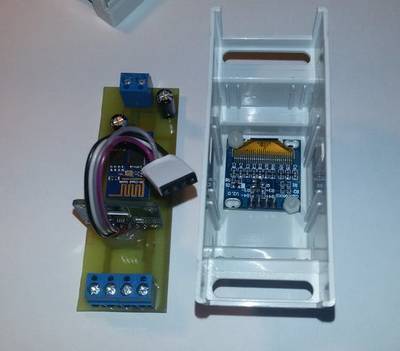
Solar power meter
"Solar power meter measures the voltage, current and power of my 40W solar panel. On the PCB are two electrolytic capacitors, connectors, 3.3V stabilizer, ESP-01, voltage and current sensor INA219. OLED display is screwed to the box. The box can be fitted on a DIN rail." [...]

ESP controlled Plant watering system
"Water plants in your balcony with solar power and control the pump from anywhere in the world!! Project automates the process of watering small plants in your home. This solution allows you to control the pump even if you are away from the house (assuming your WiFi router and ESP8266 module are on). A solar cell is used to power the submersible pump to ensure safety (didn't want to use Mains Power in contact with water). It also ensures availability of pump for use during the day. Ample sunlight and any ESP8266 based WiFi module are essential items to execute this project. I am using water collected from the Air-conditioning drain I paired a 3W Solar panel with a 6V DC Submersible pump." [...]
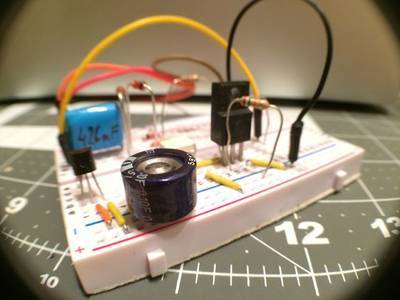
Invisible Killer of the Phone Ring
"Several years ago, a scammer woke me up at 4 am. Some nonsense about me "owing to the IRS". A few months later, some clueless telemarketer forgot about the existence of time zones and rang me up at 6 am. "It would be awesome to have a device that turns phone off during the night hours, then turns it back on during the day, all done automatically!" - was an obvious idea that popped into my mind. That was years before I have got myself interested in electronics. Yes, I am talking about the POTS (plain old telephone service, a.k.a. landline), since modern smartphones have this useful function built in. Now that I know a bit more about electronics and POTS in particular, I figured that turning the entire phone off is actually an overkill. I have built a circuit that achieves all of the following objectives: It prevents ringing of all the phones in the house that are on the same line, simultaneously; To the outside caller it just appears like nobody is picking the phone up. Otherwise, the circuit does not interfere with normal phone operations and calls can be made at any time. It is powered from the phone line itself. There are no other power sources. It is practically undetectable by the phone company, because it uses only a very small amount of power during its 6-minute startup, after which it enters a very low power mode using only 4 uA of current. If you already know all the basics of POTS signaling, or don't care about the underlying principles, then you can skip the next step." [...]

Arduino RFID Lock With RC522 - MIFARE Protocol 13.56 Mhz
"I will show you how to easily make a RFID lock. I will use Arduino UNO, RFID RC522 (MIFARE protocol). This project can also be seen here: Arduino RFID lock" [...]
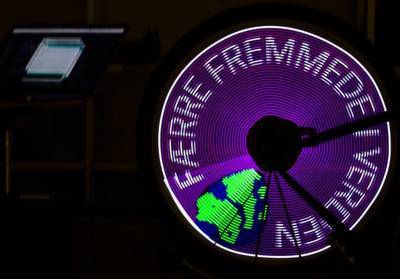
POV Bike Display - ESP8266 + APA102
"How to turn your bike into a moveable screen in the city? This instructables aims to answer how to do that cheap and easy with parts most makers already have lying around. Before we start on how to build the device I would like to thank Ada and her guide on making a POV display. I have used the code from her guide as inspiration, a stepping stone and a huge part of her code exist in my example. The biggest difference is I have made the code work with the popular WiFi microprocesser, ESP8266. I'm using a NodeMCU v2 in my example wich required a lot of tweaking. My main reasoning behind choosing a ESP8266 device is that it is a powerfull piece of hardware, and you can implement wireless communication to control the image, syncronize multiple units or what ever you can come up with. Another difference is that I have implementet a image stabilizer that should make the screen more readable when riding the bike (there is a lot room for improvement, but if you want a finished and professionel consumer product buy POV from Monkeylectric). The last difference is that I'm using cheaper parts in my build. The SK9822/APA102 is basicly the same hardware as Adafruit Dotstar, but way cheaper. You can get a NodeMCU for only $3.95 if you can wait for it to ship." [...]

0.000011574HZ
"What is the lowest possible clock frequency at which a microcontroller can still do useful work? Here’s a little project that attempts to explore this weird question. A couple of years ago, while I was studying the then-Atmel ATtiny85 microcontroller, I was fascinated by the fact that I could make it run at a mere 0.5Hz, using an Arduino board with a standard Blink sketch as an external clock source. When I reported this on a local forum, someone wondered what could possibly be done at these speeds. I gave it some thought and answered that if you put a light sensor on your roof to make a clock signal from the day/night cycle, you could probably create a system that will light up an LED every Saturday. Now, that doesn’t sound particularly useful, but it should be remembered that for religious Jews, Shabbat (Saturday) is sacred and important in many ways. Moreover, according to the Hebrew calendar, a new day begins more or less at sunset, not at midnight. So silly as it is, if this system is done right, it will be actually meaningful – if not practical – to some people." [...]
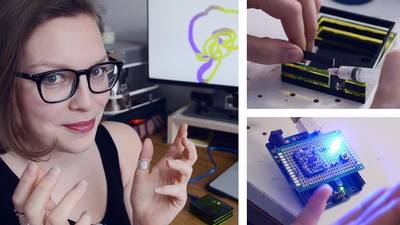
Arduino Drawing
"Using an Arduino mounted with a magnetometer, node.js and socket.io, this project uses disturbances in the magnetic field to draw." [...]

Sending Atmospheric Data from the MSP430 and CC3100 Wi-Fi BoosterPack to Plot.ly
"For a while now I have been thinking about the ability to remotely monitor what is going on environmentally in a location. I have thought about this with regards to the summer, with a cottage more than an hour away it would be nice to know what the weather pattern is for the cottages location (not the general city or county) to decide if it is worth the long drive. I have also thought about this with regards to parts of my house, such as the attic, basement etc, to help determine how well the insulation is working or what is going on in parts of the house where people may not often frequent. Lastly it has come up in many conversations with storekeepers who want to know how their fridges are performing and to know when there may be an issue. With all these usage cases I decided I should come up with a solution. When TI came out with their CC3000 I thought I would give that a try. I spent a few weeks working with this BoosterPack in conjunction with a Stellaris (Tiva C) and MSP430G2553 launchpad but had a good few issues that just didn't seem easily resolvable as well as some limitations that hinder the usability of the system, besides by then TI had come out with the CC3100 that was supposed to resolve a lot of issues as well as be some what easier to use." [...]

Light Following Robot Using Arduino
"Hi everyone. creating a robot that follows the light you are giving as input is simple . we create this project using arduino and three LDR that are mounted in front, left side and right side. we give light input to any of these ldr's and the robot detects the light and follows it. The program and other instructions are provided below." [...]

How to Make SINONING Arduino Scale With Source Code
"This is a kit can be applied to real life. If you need more accuracy, or more range, you can be based on this kit, use more reliable sensors, make more powerful scale. Through this kit of learning, you can understand the principle of electronic scale. when you get this knowledge, you will find so many fun to learn arduino. and you will get confidence, you can go further." [...]

4 Watt FM Transmitter
"he following is a simple yet powerful 4W FM transmitter which is tunable to 88-108MHz frequency. Connect to your ipod/computer, etc. When this was first made, I only had a 2N2219A on hand, which resulted in a lower RF output. I have since swapped out the transistor for a 2N3866 for full 4W output at around 15VDC supply. In order to achieve a high output level, you will need a well tuned antenna, and a large heatsink to dissipate the heat from T2 transistor. Transmitter was mounted in metal enclosure and works extremely well." [...]
That's all Folks!


